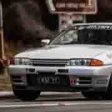Sensor In Catalytic Converter
Announcements
-
Similar Content
-
Latest Posts
-
Ignore going off the dash, find the right pins on the ECU connector, as it has things you need to power that the dash doesn't. That is unless you had the entire RB25 wiring loom (body, fuse boxes etc too) at which point just find the ignition switch. But I'd go for the ECU specifically if you're mainly on just the engine harness.
-
haha yeah those or the KiwiCNC ones.. but I need to go buy that lotto ticket you mentioned (and win) to afford them. They do seem like a really good thing though - especially with the R35 bearing upgrade.
-
By Dose Pipe Sutututu · Posted
I'm good at suggesting things that cost more than what they should. https://www.brypar.com/shop/prime-r/prime-r-uprights/nissan-skyline-r32-34-gtr-front-upright/ -
By Dose Pipe Sutututu · Posted
I saw on your IG page! Mate, how lucky are you - go buy the lotto. -
I have been wondering the same thing. Ikeya Formula here. Add A050's and they are under a lot more strain than stock - plus that lever as you point out. Still you'd think you'd hear more about it.
-








Recommended Posts
Create an account or sign in to comment
You need to be a member in order to leave a comment
Create an account
Sign up for a new account in our community. It's easy!
Register a new accountSign in
Already have an account? Sign in here.
Sign In Now